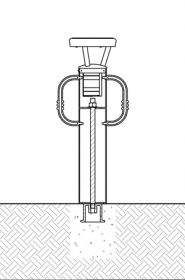Installing Solar Bike Bollards using Anchor Castings
Reliance Foundry’s planter bollards can be made removable with removable mounts using anchor castings. Then, a planter bollard can be removed by simply unfastening a padlock and removing a pin that runs through the center of the bollard’s base. This installation method allows for the convenience of removable bollards to be combined with the aesthetics of planter bollards.
With this installation method, the bollard is intended to act solely as a visual traffic deterrent to restrict or limit access to particular areas. The bollard will offer little impact resistance.
PARTS LIST
|
# |
PART |
QTY |
|---|---|---|
|
1 |
Bike Bollard Base with Bike Arms |
1 |
|
2 |
Bike Bollard Solar Light Cap |
1 |
|
3 |
Anchor Casting 1″ |
1 |
|
4 |
Threaded Rod 1″ |
1 |
|
5 |
Washer 1″ |
1 |
|
6 |
Hex Nut 1″ |
1 |
|
7 |
Hexagon Socket Button Head Cap Bolt |
3 |
INSTALLATION EQUIPMENT
|
Special Hex Key |
Dirt Tamper |
|
1-/2″ Wrench |
Level |
|
Measuring Tape |
Duct Tape |
NOTE
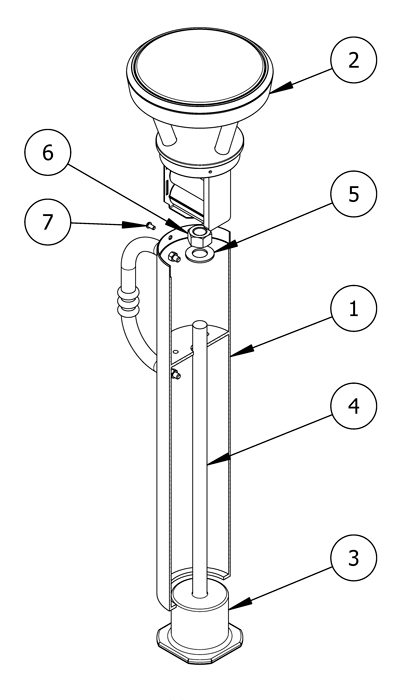
- To protect the finish, keep bike bollards in original packaging until the exact moment of installation.
- Handle with care to avoid scratching or damaging bike bollard surfaces as abrasions will lead to rust.
- Once scratched, bike bollards cannot be repaired to original form without re-finishing the entire surface.
Before installation
Study the site plans
Site plans are generally created by the architect of the project.
The architect will mark the intended location of each bike bollard on the plan.
Ensure that the plan coincides with the site and familiarize yourself with the intended arrangement of the bike bollards.
Check for hazards
Always check for hazards such as water pipes, gas lines, and underground wiring before digging.
Prepare the site for concrete
Please consult your local Building Code Department to determine the frost line in your area.
You will be digging below the frost line; the new concrete footing must reach beyond this frost line.
Note: If the frost line is less than 12″ below surface level, dig to a minimum depth of 12″. This is recommended in order to create stability.
The diameter of the hole should extend to a minimum of 10″.
Center the auger on the installation mark and bore a hole to the required depth and diameter.
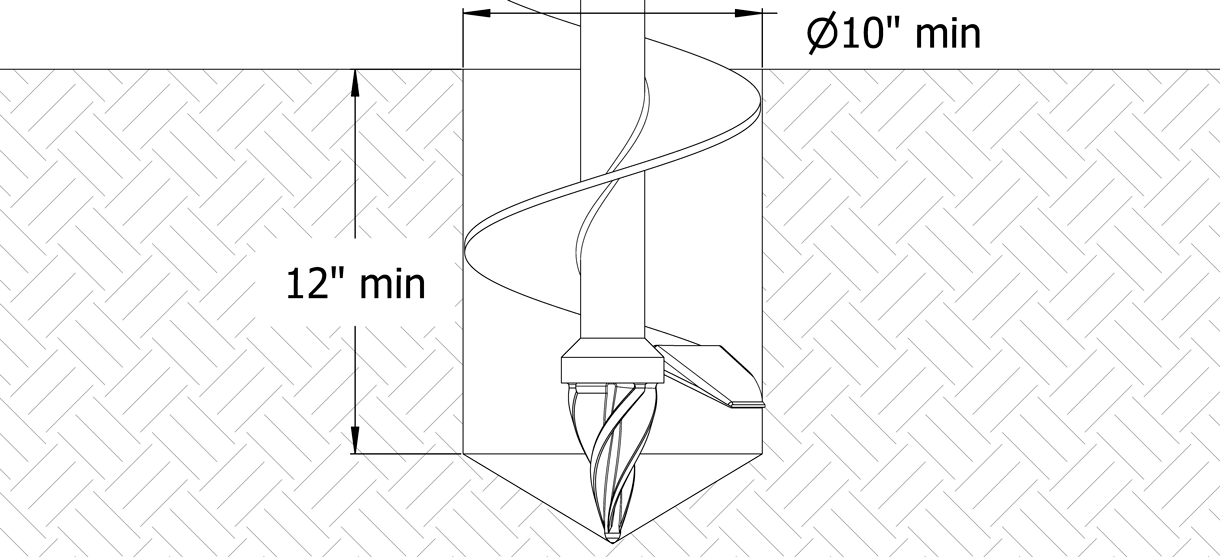
Ensure the area is properly formed to create a perimeter that will hold wet concrete.
Use a dirt tamper to compact the soil below the intended surface.
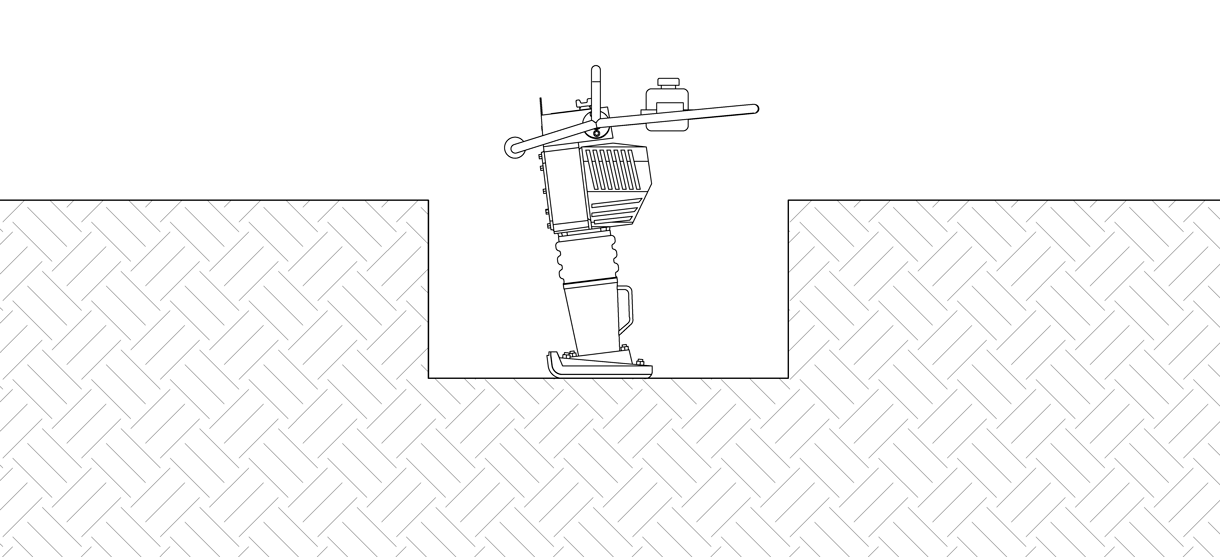
Prepare the anchor casting for designated location
If the surrounding area is quite dirty or dusty, cover the bottom hole of the anchor casting with duct tape to prevent debris from entering the threaded area. The top hole should already be covered with the plug (A).
Place the anchor casting in designated location and ensure that the top of the casting will be flush with the finished surface of the concrete grade (the anchor casting is 4″ high).
The top of the anchor casting must be level.
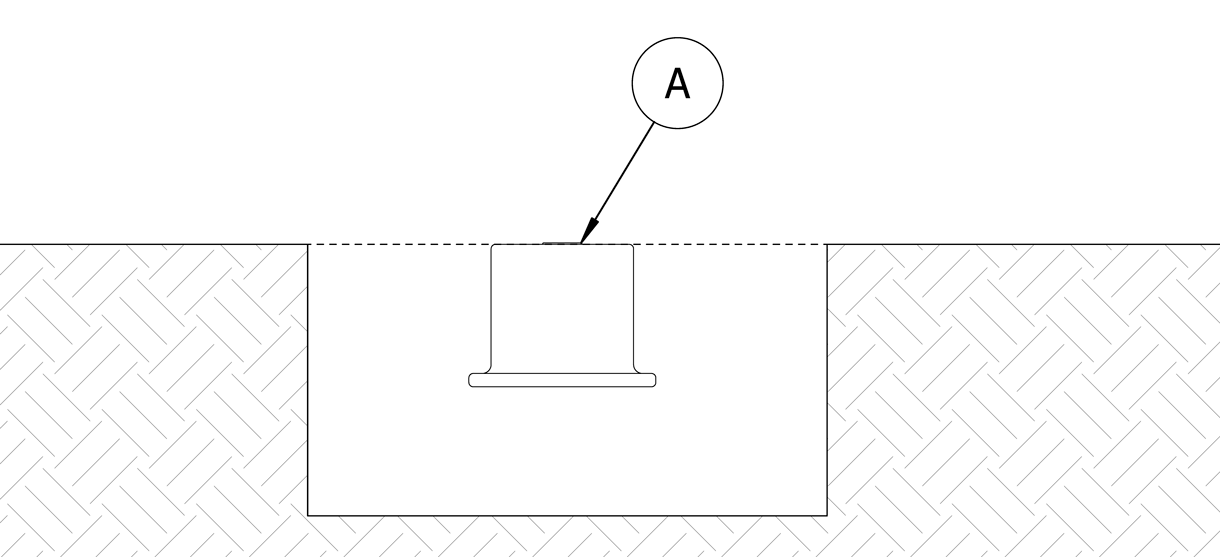
Pour the concrete
Mix and pour the concrete
Ensure that the proper ratio of water and concrete mix is used—the concrete should have a similar texture to moldable clay.
Pour the concrete evenly, ensuring surface is level, and avoid disrupting the anchor casting.
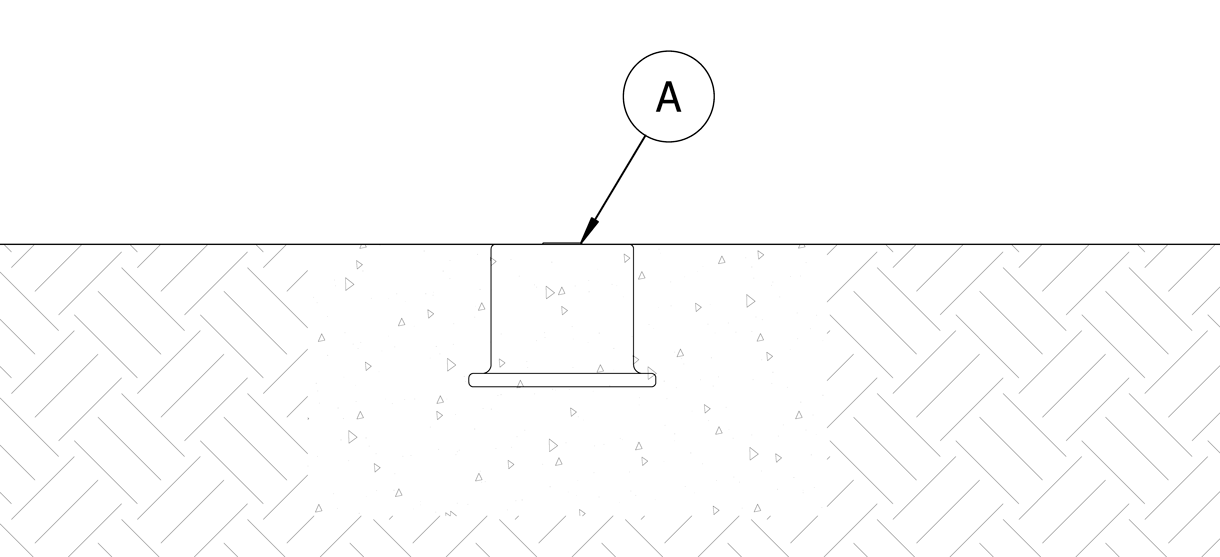
Allow the concrete to cure
A minimum of 2–3 days should be given for concrete to cure before beginning construction projects on new concrete surfaces.
Note: Moisture in the environment and cool temperatures can significantly slow the process.
Secure the bike bollard
Place the bike bollard near the anchor casting
Keep the bike bollard in its protective packaging. After ensuring the concrete surface has fully cured, carefully place the bike bollard beside each anchor casting.
When ready to install, remove the bike bollard’s protective packaging.
Remove the plug (A) from the top hole of the anchor casting.
Set the bike bollard over the anchor casting
Lower the threaded rod through the bike bollard base.
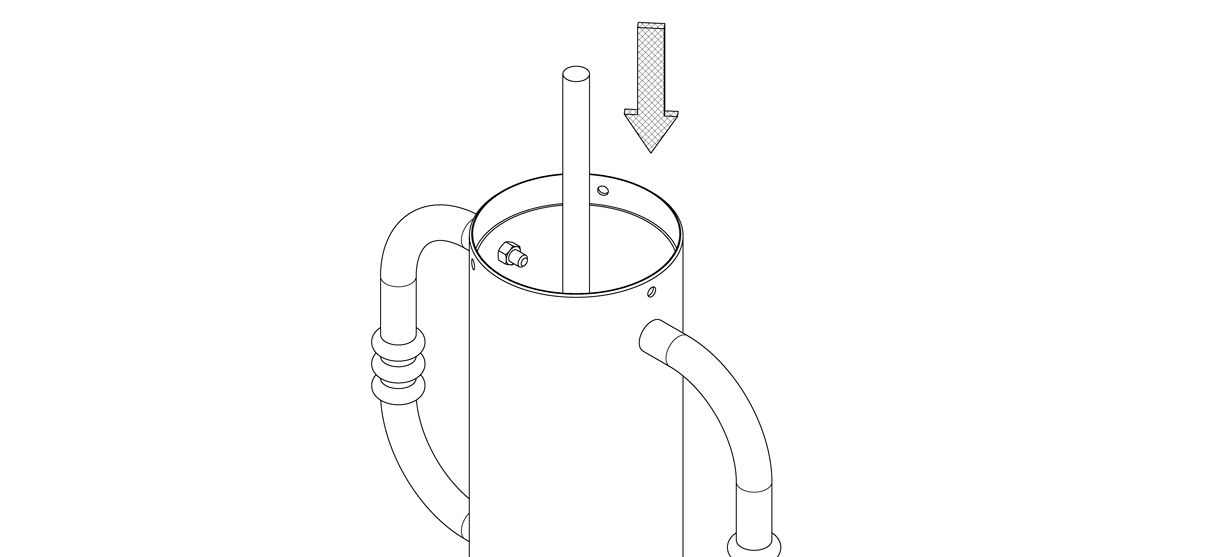
Continue to thread the rod into the anchor casting.
Tighten(1) the threaded rod by hand until it is secure in the anchor casting.
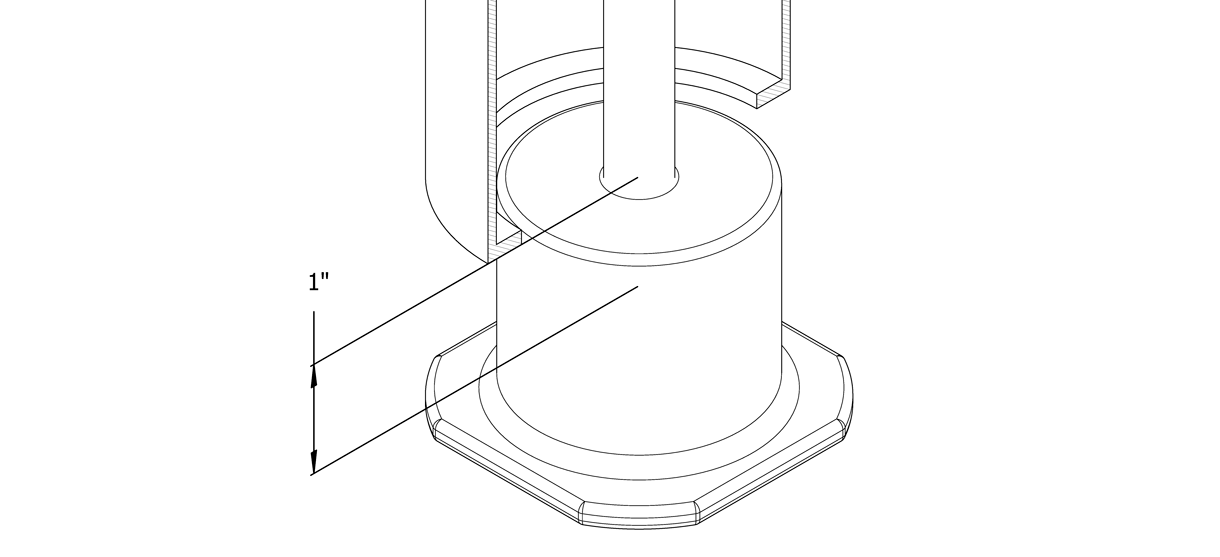
Secure the bike bollard
Place the washer over the threaded rod so that it rests on top of the shaft of the bike bollard.
Apply the 1″ nut to the threaded rod and use a socket wrench to tighten until the bike bollard is secure.
Note: Be sure to check the orientation of the bike bollard arms and make any necessary adjustments now. Once drilled and installed, there is no way to rotate the bike bollard.
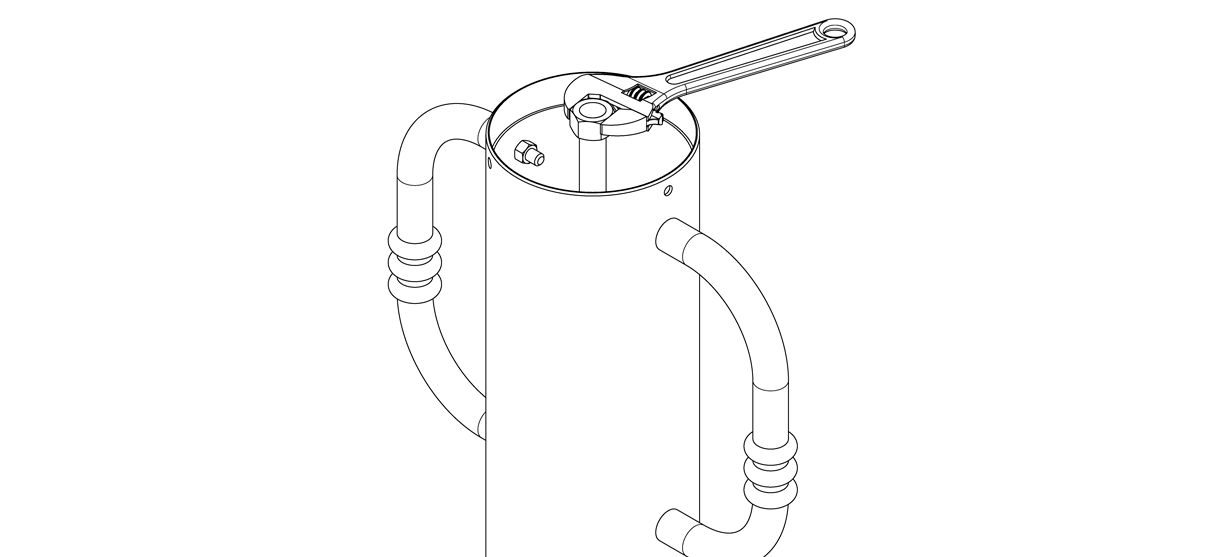
Install the solar light cap
Connect the battery
With the lighting assembly still in its packaging, locate the battery’s wire plug and connect to the 2-pin socket attached to the light fixture.
Once connected, the lighting fixture will run a test pattern and may flash for 3–5 seconds.
Note: If the light does not flash, please stop installation and contact Reliance Foundry’s sales department for assistance.
Secure the solar light cap
Remove solar light cap from its packaging.
Place the solar light cap on top of the shaft of the bike bollard.
Secure the solar light cap to the bike bollard base with the three bolts and tighten equally.
Note: For asymmetrical lighting, consider the lighting pattern. When attaching the solar light cap, twist it to the desired lighting pattern before bolting down.
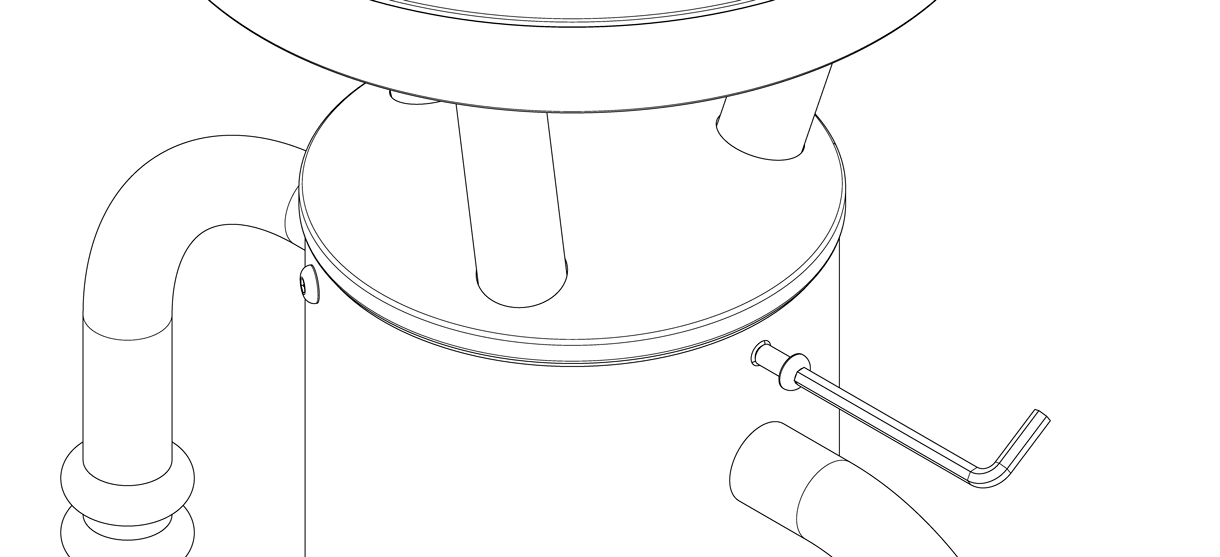
Inspect
Inspect the installation
From a distance, examine the plane of view.
Ensure the bike bollard is plumb to the surface, and the surface is flat.
Check the bike bollard for any signs of surface damage
Abrasions should be covered as soon as possible to prevent rust and ensure the proper life of the bike bollard. For damage repair or other servicing needs, please contact Reliance Foundry’s sales department.
Care and maintenance
Reliance Foundry manufactures its products to the highest design standards to ensure their durability. Reliance Foundry’s bike bollards are finished with long-lasting powder coating. In most North American environments, routine inspections and cleaning will ensure that bike bollards retain their aesthetic appeal. Proper care and maintenance are required to maintain the finish and ensure a full service life.
1. Recommended tightness is until the threaded rod reaches a depth of approximately 1″ in the anchor casting.
